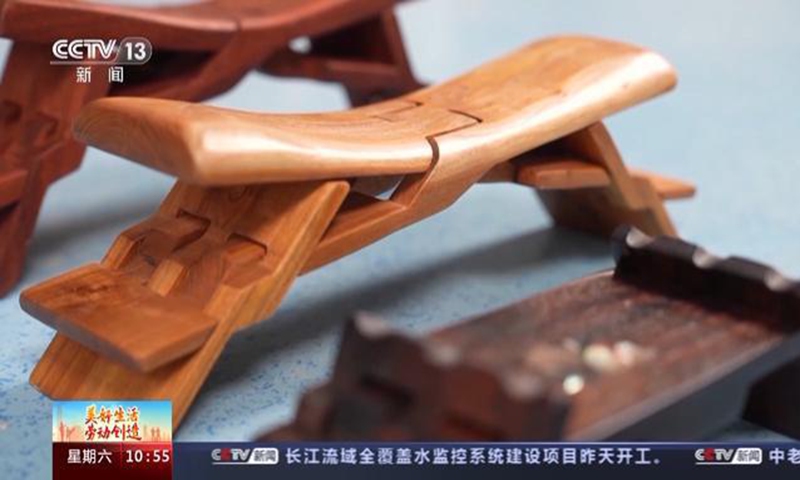
Luban Pillow Photo: Screenshot from CCTV
In a recent development in East China, a master of intangible cultural heritage has spent the past 11 years creating 1,300 Luban Pillows without using a single nail. The Luban Pillow is a special mortise and tenon structure made from a single piece of wood that has been hollowed out.Legend has it that the Luban Pillow was invented by the woodworking ancestor Luban over 2,000 years ago. It is made from a single piece of wood without the use of nails or rivets. When opened, it can be used as a small stool, and when closed, it serves as a pillow for sleeping.
While the structure of the Luban Pillow may seem simple, its construction is intricate and complex. The process involves selecting wood, processing the materials, drawing structural lines, and going through multiple steps such as sawing, chiseling, carving, grinding, and drilling. The final touches include decoration and embellishment to complete the artwork.
Traditionally, Luban Pillows were mainly used for sleeping and sitting. However, Qiao Yibing,a master of intangible cultural heritage in Ji'nan city, Shandong Province, has expanded the possibilities of the Luban Pillow by adjusting its structure and proportions to meet modern needs. In addition to reclining chairs and desks, he has created a variety of novel objects using the Luban Pillow.
Qiao stated that when folded, the Luban Pillow can be used as a handle, an armrest for writing or drawing, a wrist rest, or even a phone stand. By combining traditional craftsmanship with contemporary life, he aims to engage more young people in using the Luban Pillow and promote the dynamic inheritance of intangible cultural heritage.
Beyond the structure, Qiao is particularly interested in the cultural connotations and positive meanings behind the Luban Pillow. He metaphorically compares the Luban Pillow to a person, embodying modesty and harmony. The craftsmanship of mortise and tenon symbolizes the unity of heaven and humanity, emphasizing mutual complementarity and interdependence.
Qiao emphasized the significance of the Luban Pillow as a token of Chinese technology and culture that was likely transmitted to other countries through the Silk Road. He believes that it represents the wisdom of ancient Chinese laborers and inventors, showcasing the country's innovative spirit to the world.
"Despite its small size, the Luban Pillow embodies the highest level of woodworking craftsmanship," Qiao remarked. "The structure is the soul of the entire production process. If any part goes wrong, the entire piece of wood is wasted. Even though I have become very skilled at making them, just creating the structure alone takes nine hours, and completing a satisfactory Luban Pillow requires three days. However, once you learn how to make one, you can do any woodworking task."
Global Times

